Electric Current-
Before you go through this article, make sure that you have gone through the previous article on Basics of Electric Current.
We have learnt-
- When electric charges (free electrons) flow through a conductor in a preferred direction, it constitutes an electric current.
- The amount of charge flowing through the area per unit time gives a measure of electric current.
In this article, we will learn the mechanism of current flow in a conductor.
Mechanism of Current Flow in a Conductor-
Metals have a large number of free electrons nearly 1028 per cubic meter.
In the absence of any external electric field,
- These free electrons are in a state of continuous random motion due to thermal energy.
- Their velocities are distributed randomly in all the directions. There is no preferred direction of motion.
- On an average, the number of free electrons travelling in any direction will be equal to the number of free electrons travelling in the opposite direction.
If u1, u2,…., un are the random velocities of n free electrons, then average velocity of all the free electrons in the absence of external electric field will be-
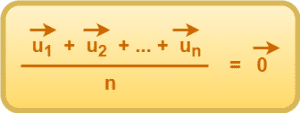
Thus, there is no net flow of charge in any direction.
Also Read- Basics of Electric Field
In the presence of external electric field E,
- Each free electron experiences a force of magnitude eE in opposite direction of the electric field.
- Each free electron undergoes an acceleration given by-
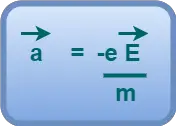
- As the electrons accelerate, they frequently collide with the positive metal ions and other free electrons of the metal.
- Between two successive collisions, an electron gains a velocity component in the direction opposite to the electric field in addition to its random velocity.
- However, the gain in velocity lasts for a short time and is lost in the next collision. After each collision, the electron starts afresh with a random thermal velocity.
If an electron having random thermal velocity u1 accelerates for time τ1, then it will attain a velocity-

Similarly, the velocities of other electrons will be-
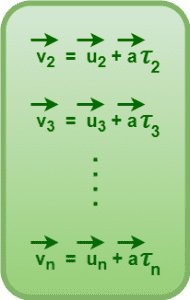
The average velocity vd of all the free electrons in the presence of external electric field will be-
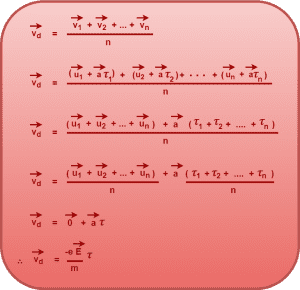
Here,
- The parameter Vd is called drift velocity of free electrons.
- The parameter τ = (τ1 + τ2 + …. + τ3) / n = Average time interval between two successive collisions called as relaxation time.
Now, let us define these terms-
Relaxation Time-
The relaxation time of free electrons is defined as-
|
The average time interval that elapses between two successive collisions of an electron inside the conductor is called as relaxation time. |
Drift Velocity-
The drift velocity of free electrons is defined as-
|
The average uniform velocity gained by the free electrons inside the conductor on the application of an external electric field which is responsible for current through it is called as drift velocity. |
The drift speed of free electrons inside the conductor is given by-
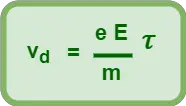
Here,
- e = Charge on electron = 1.6 x 10-19 C
- m = Mass of electron = 9.11 x 10-31 kg
- E = Electric field strength
- τ = Relaxation time
Test Your Concepts-
Quiz on Drift Velocity & Relaxation Time
Next Article-
Relation Between Electric Current & Drift Velocity
Get more notes & other study material of the Chapter Current Electricity.

